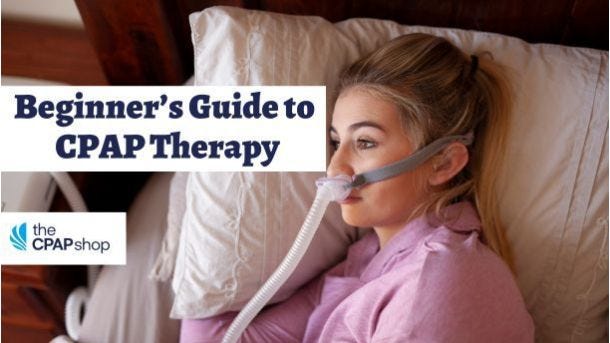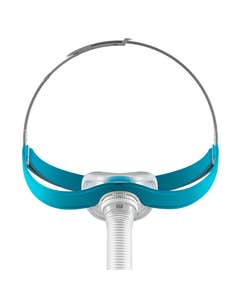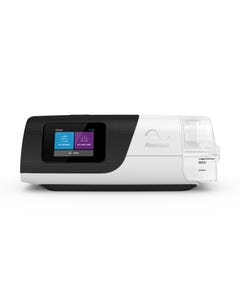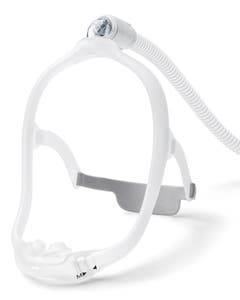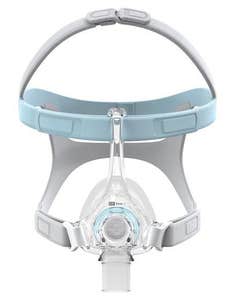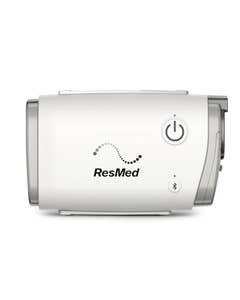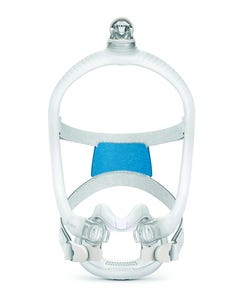Getting Used to CPAP Therapy: A Beginner’s Guide
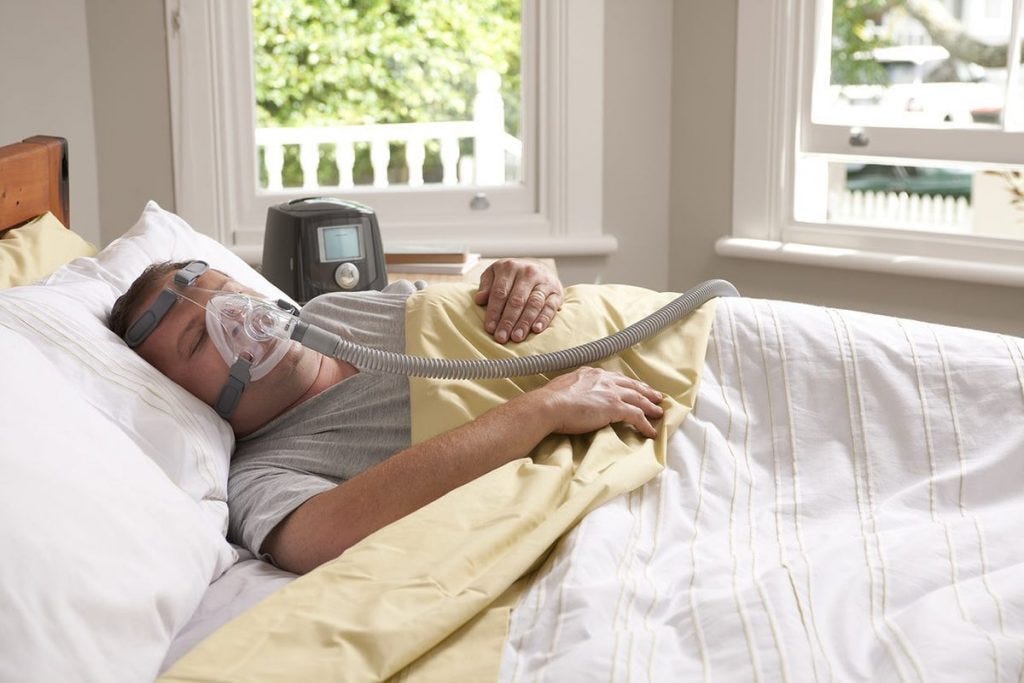
If you have been diagnosed with sleep apnea, your doctor has most likely prescribed CPAP therapy as a treatment. The more you know about CPAP, the more effective your therapy will be. Our beginner’s guide answers the most important questions about CPAP therapy, from equipment to best practices.
What is CPAP?
CPAP stands for continuous positive airway pressure therapy. It is most commonly used to treat obstructive sleep apnea (OSA) and helps prevent daytime symptoms of this sleep disorder. These symptoms include mood swings, excessive fatigue, lack of concentration and more. By combining CPAP therapy with other lifestyle changes, such as a healthy diet, exercise, or cessation of smoking and drinking, patients can decrease the number of negative side effects associated with sleep apnea.
How Does CPAP Work?
A CPAP machine sends pressurized air to a patient’s airway to keep it from closing while sleeping. The air from the machine travels to the patient via a tube and CPAP mask interface. Some models of CPAP only provide one fixed air pressure throughout the night, while other auto-adjusting machines change air pressure depending on the minimum amount required to keep the user from having an apnea event.
The Nightly CPAP Routine: Four Key Tips for New Patients
1. Get used to your CPAP mask
One of the greatest obstacles to CPAP compliance is your CPAP mask. There are a few different mask types to choose from: full face, nasal, and nasal pillow. Each has its own benefits, and not everyone will like every mask. Get used to wearing your CPAP mask before you go to bed.
Give the mask a chance. You may have a few sleepless nights at first. Consistency is key and using the CPAP each and every night should be a goal for new CPAP users as symptoms of OSA improve significantly after the first few weeks of continuous use.
Once new CPAP users get used to sleeping with the machine, they all report significant improvements. If, however, you are still having difficulty with your CPAP mask, The CPAP Shop offers a free 30-day money-back guarantee on all masks. This then allows you to try different styles to get the most comfort out of your CPAP therapy.
2. Stay compliant with your therapy
Don’t miss nights of CPAP, even though it may be difficult. If you skip, you’ll only prolong your adjustment period. By staying compliant with your therapy, you are:
- Improving your overall physical health and mental health
- Improving your sleep at night and your well-being during the day
Some CPAP users, both new and veteran, choose not to take their equipment with them on trips or when traveling. This can also be detrimental to your CPAP success. There are a number of travel CPAP machines to choose from that allow you to take therapy on the road and continue to treat your sleep disorder.
3. Keep your CPAP equipment clean
Dirty hoses, water chambers and masks can give you infections, which can hinder your PAP therapy. Follow the manufacturer recommendations for cleaning and replacing equipment regularly to ensure healthy PAP therapy. You can also use CPAP cleaning and sanitizing machines for faster, easier sanitation and disinfection.
4. Make adjustments and changes to your equipment as needed
Feel free to customize your CPAP equipment to fit your comfort. Try different CPAP masks to find one that suits you. Let your doctor know about any discomfort, so adjustments can be made to your CPAP machine. If you experience dry throat or mouth from CPAP consider adding a heated humidifier to moisturize the air during therapy.
Your needs and comfort settings will change throughout therapy. Don’t be afraid to speak up if something does not feel like it is working. Your doctor, as well as the team at The CPAP Shop, is here to help you with any questions or concerns you have about your therapy.
Selecting the Perfect CPAP Mask
CPAP masks are the trickiest part of the entire CPAP equation for the new CPAP user. Obviously, not all faces have the same structure, shape or size. Finding a CPAP mask that complements your facial features will be key to becoming compliant.
A mask should not be overtightened and should merely sit on the face, allowing the machine pressure to create a seal. There are many different types and styles of CPAP masks. If one is not comfortable or working appropriately for you, don’t suffer through it. Change the type or style so you do not compromise your therapy.
A comfortable and well-adjusted mask will allow you to easily transition to nightly CPAP therapy.
Types of CPAP Masks
Nasal CPAP masks cover the nose and have traditionally been the most common. There are a few different styles including ones with gel or silicon cushions available.

The most successful mask in the last year has been the Philips Respironics DreamWisp as people find it incredibly comfortable and effective. Our customers also have had success with ResMed AirFit N30 nasal mask styles.
Nasal Pillow CPAP masks are increasingly becoming the most popular masks available today. They have minimal facial contact, no forehead support and fit right under the nasal cavity making them very light and comfortable.
Nasal pillow masks also allow for a clear field of vision and a minimal number of parts to clean and replace. The most popular styles include ResMed AirFit P10 and Swift FX.
Full Face CPAP masks cover both the nose and mouth. They are typically used by people who breathe through their mouth but don’t want to use a combination of chinstrap and nasal mask.
The full-face mask is also very useful when nasal congestion occurs or if a person has difficulty breathing only through their nose. The most popular styles are the Philips Respironics DreamWear Full Face Mask, and the Fisher & Paykel Simplus.
Get answers to all your CPAP equipment questions from our knowledgeable customer care team at The CPAP Shop. Call us at 866-414-9700 or email questions@thecpapshop.com.
Key Takeaways
- CPAP therapy is the most common treatment option for those diagnosed with obstructive sleep apnea.
- A CPAP machine delivers pressurized air into a person's airway to keep it open, allowing a person to continue breathing normally while they are sleeping.
- Tips to achieving a good night's sleep with CPAP therapy include staying consistent, having a routine, proper maintenance of CPAP equipment, and others.
If you have been diagnosed with sleep apnea, your doctor has most likely prescribed CPAP therapy as a treatment. The more you know about CPAP, the more effective your therapy will be. Our beginner’s guide answers the most important questions about CPAP therapy, from equipment to best practices.
What is CPAP?
CPAP stands for continuous positive airway pressure therapy. It is most commonly used to treat obstructive sleep apnea (OSA) and helps prevent daytime symptoms of this sleep disorder. These symptoms include mood swings, excessive fatigue, lack of concentration, and more. By combining CPAP therapy with other lifestyle changes, such as a healthy diet, exercise, or cessation of smoking and drinking, patients can decrease the number of negative side effects associated with sleep apnea.
Who Needs to Use a CPAP Machine?
CPAP machines are used by those who have sleep apnea. Sleep apnea occurs when a person repeatedly starts and stops breathing during the night. This causes a number of health complications and can get worse if it is not diagnosed and treated.
How Does CPAP Work?
A CPAP machine sends pressurized air to a patient’s airway to keep it from closing while sleeping. The air from the machine travels to the patient via a tube and CPAP mask interface. Some models of CPAP only provide one fixed air pressure throughout the night, while other auto-adjusting machines change air pressure depending on the minimum amount required to keep the user from having an apnea event.
The Nightly CPAP Routine: Key Tips for New Patients


Use Your CPAP Mask Each Time You Go to Bed
Using CPAP therapy, including a CPAP mask, consistently every night is what will drive the best results and fewer complications. Using your equipment every night will allow you to become more CPAP compliant and have a better day when you wake up the next morning. Although it may be a little uncomfortable at first, holding yourself accountable and sticking to a routine will be highly beneficial in acheiving CPAP success.
Get Used to Your CPAP Mask
One of the greatest obstacles to CPAP compliance is your CPAP mask. There are a few different mask types to choose from: full face, nasal, and nasal pillow. Each has its own benefits, and not everyone will like every mask. Get used to wearing your CPAP mask before you go to bed.
Give the mask a chance. You may have a few sleepless nights at first. Consistency is key and using the CPAP each and every night should be a goal for new CPAP users as symptoms of OSA improve significantly after the first few weeks of continuous use.
Once new CPAP users get used to sleeping with the machine, they all report significant improvements. If, however, you are still having difficulty with your CPAP mask, The CPAP Shop offers a free 30-day money-back guarantee on all masks. This then allows you to try different styles to get the most comfort out of your CPAP therapy.
Stay Compliant with Your Therapy
Don’t miss nights of CPAP, even though it may be difficult. If you skip, you’ll only prolong your adjustment period. By staying compliant with your therapy, you are:
- Improving your overall physical health and mental health
- Improving your sleep at night, and your well-being during the day
Some CPAP users, both new and veteran, choose not to take their equipment with them on trips or when traveling. This can also be detrimental to your CPAP success. There are a number of travel CPAP machines to choose from that allow you to take therapy on the road and continue to treat your sleep disorder.
A CPAP Humidifier Can Prevent Dryness in Your Nose and Throat
Thanks to technology advancements over the years, most CPAP machines come with an integrated humidifier. Adding humidification to therapy adds moisture and comfort. It will also help avoid dryness in the throat and nose. Keeping your throat and noise moist during CPAP treatment will provide a provide a more comfortable experience.
Using AutoRamp With Your CPAP Device Can Help You Fall Asleep
AutoRamp is a very popular feature included with many CPAP machines. This is a setting that allows you to adjust your air pressure comfortably as your fall asleep. AutoRamp will begin on a lower pressure setting than you are prescribed, and will gradually go up as once it recognizes you are asleep. This feature allows CPAP patients to fall asleep more comfortably while still getting a full night's sleep and treatment every night.
Keep Your CPAP Equipment Clean
Dirty hoses, water chambers, and masks can give you infections, which can hinder your PAP therapy. Follow the manufacturer's recommendations for cleaning and replacing equipment regularly to ensure healthy PAP therapy. You can also use CPAP cleaning and sanitizing machines for faster, easier sanitation and disinfection. Here are some other tips for cleaning your CPAP equipment.
Check Your CPAP Mask Fit to Ensure There are No Leaks or Gaps
There are many different CPAP masks a person can choose from. They differ in function, comfort level, noise level, how they seal, and more. Finding the right CPAP mask for you can be difficult, but with the help of your healthcare provider or other sleep expert, you can find the one that best suits your needs. Make sure that whatever mask you choose does not leave marks on your face from being too tight and is sealed properly for efficient airflow all night. If your mask falls off your face at night, that is an indication to tighten it. If you are waking up with irritation and red marks on your face, that means you need to loosen it a little.
Make Adjustments and Changes to Your Equipment as Needed
Feel free to customize your CPAP equipment to fit your comfort. Try different CPAP masks to find one that suits you. Let your doctor know about any discomfort, so adjustments can be made to your CPAP machine. If you experience dry throat or mouth from CPAP consider adding a heated humidifier to moisturize the air during therapy.
Your needs and comfort settings will change throughout therapy. Don’t be afraid to speak up if something does not feel like it is working. Your doctor, as well as the team at The CPAP Shop, is here to help you with any questions or concerns you have about your therapy.
Benefits of Using a CPAP Machine
If you have sleep apnea, using a CPAP machine is essential for your overall health and well-being. A CPAP machine has the following benefits:
- Improves your heart health
- Decreases the risk of strokes, high blood pressure, diabetes and other health complications
- Aids in weight loss
- Reduces sleepiness during the day
- Improves overall mood and motivation
- Promotes productivity
Selecting the Perfect CPAP Mask
CPAP masks are the trickiest part of the entire CPAP equation for the new CPAP user. Obviously, not all faces have the same structure, shape, or size. Finding a CPAP mask that complements your facial features will be key to becoming compliant.
A mask should not be overtightened and should merely sit on the face, allowing the machine pressure to create a seal. There are many different types and styles of CPAP masks. If one is not comfortable or working appropriately for you, don’t suffer through it. Change the type or style so you do not compromise your therapy. A comfortable and well-adjusted mask will allow you to easily transition to nightly CPAP therapy.
Types of CPAP Masks
- Nasal CPAP masks cover the nose and have traditionally been the most common. There are a few different styles including ones with gel or silicon cushions available. It allows for a clear field of vision and a minimal number of parts to clean and replace.
- Nasal Pillow CPAP masks are increasingly becoming the most popular masks available today. They have minimal facial contact, no forehead support, and fit right under the nasal cavity making them very light and comfortable.
- Full-face CPAP masks cover both the nose and mouth. They are typically used by people who breathe through their mouth but don’t want to use a combination of chinstrap and nasal mask. A full-face mask is also very useful when nasal congestion occurs or if a person has difficulty breathing only through their nose.
Get answers to all your CPAP equipment questions or assistance purchasing CPAP products from our knowledgeable customer care team at The CPAP Shop. Call us at 866-414-9700 today!



